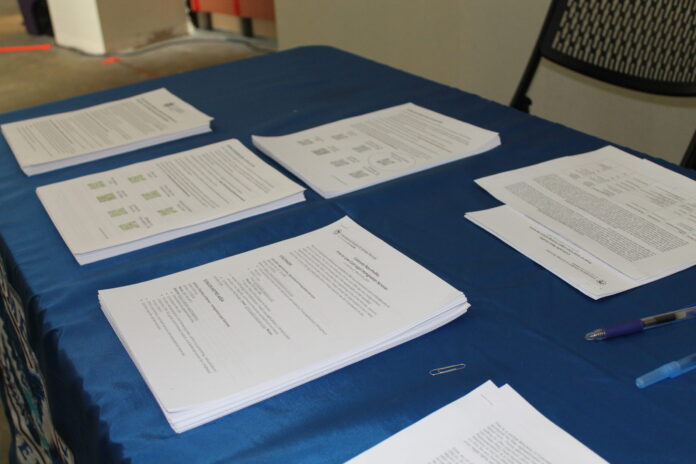
The U.S. Department of Homeland Security developed employment eligibility program E-Verify in the late 1990s, starting it as a pilot program before requiring federal contractors to use it. Soon, the internet-based system will get an update in the form of E-Verify+.
But while the new system streamlines the verification process by allowing employees to directly input their Form I-9 information, Faegre Drinker Biddle & Reath partner Roger Tsai says the updated system may not be a good fit for all employers — at least not yet.
E-Verify+ is still in its pilot program stage, Tsai noted, and used to be called E-Verify NextGen. The program is run by the U.S. Citizenship and Immigration Services department within DHS. Tsai added that starting this month, the new version of the system opened to a limited number of employer participants and explained it’s not clear how many employers opted in.
“We view it as the biggest change in immigration processes in 20-plus years,” Tsai said, explaining this update to the system may take at least several years in pilot stage before it’s offered to all interested employers.
What it does
E-Verify+ allows new hires at U.S. companies to complete Section 1 and parts of Section 2 of an I-9 and upload work authorization documents into the internet-based system. The system will then directly resolve any non-confirmations with the new hire, without involving the company’s human resources department. After the system confirms the new hire’s work authorization, the HR department would complete Section 2 of the I-9 and review digital copies of work authorization documents.
Tsai noted current verification processes without the new E-Verify+ require HR departments to scan and make hundreds of copies of personal documents for employees. “HR might end up having hundreds of driver’s licenses on their desktop.”
He noted that assuming the E-Verify+ system has good data privacy protocols, the information employees directly put into E-Verify+ shouldn’t leak, at least in theory. In that way, the system may end up being more secure for employers and employees.
“We view it as the biggest change in immigration processes in 20-plus years.” – Faegre Drinker Biddle & Reath partner Roger Tsai
Potential pitfalls
But Tsai noted the system isn’t ready to be publicly released today. Notably, it doesn’t allow anyone to make edits or changes after the initial completion of Sections 1 and 2 and it doesn’t let HR review the documents before they’re submitted to the federal government.
In response to Law Week’s question about if this update to the system may contribute or otherwise lead to the deportation of individuals who give it their information and aren’t authorized to work in the U.S., Tsai said it’s not wholly outside the realm of possibility. But it hasn’t happened yet to his knowledge.
U.S. Immigration and Customs Enforcement is a different agency than the one that operates E-Verify. “These two agencies have an information sharing MOU — memorandum of understanding — so they have an agreement in place to share information,” Tsai cautioned. “So is it possible that that could occur in the future? Absolutely. Have they done so thus far? The answer is no.”
“But you’re absolutely correct that if they were ever to do that, it would have a deeply chilling effect on anybody who’s now willing to complete an I-9,” Tsai continued. He added that because new hires would be providing information directly, if they lied about citizenship or their work authorization status, they’re also providing their home address.
Tsai also noted employers can be fined for knowingly employing undocumented workers. Companies face fines of roughly $16,000 per worker and $2,400 per I-9. He explained employers who have a pattern of employing undocumented workers may face more serious penalties, including jail time of up to 10 years.
But fiscal penalties may not only be for employers. A 2015 study published by the Southern Economic Journal noted it found “evidence that E-Verify mandates reduce average hourly earnings among likely unauthorized male Mexican immigrants while increasing labor force participation among likely unauthorized female Mexican immigrants.” That study also noted mandated use of E-Verify may “appear to lead to better labor market outcomes among workers likely to compete with unauthorized immigrants.”
Possible rollout of E-Verify+
Some states like Colorado, California, Nebraska and Texas require the use of E-Verify in some way, according to the National Conference of State Legislatures. But only nine states require E-Verify for all employers, except for some small businesses. Roughly 13 states require employers to use the system if they’re a public employer or operate as a public contractor or subcontractor.
Tsai explained the system may take a while before it’s ready to be rolled out to the public. He noted the original E-Verify platform took around 10 years in its pilot stage before it was released more widely. “It’s not to say that this article is 10 years too early,” he added, noting the development of the system should be monitored anyway.
E-Verify+ may be helpful for some employers because it could reduce the burden HR teams face when completing the full verification process with new hires and save small or mid-size employers from the added data privacy burden of storing sensitive information. Tsai also noted the system may minimize potentially discriminatory actions like document abuse and asking for too many specific work authorization documents.

